Bartlett Pear Tree
Description
Characteristics of the Bartlett Pear Tree
The Bartlett pear, known as the Williams pear in parts of Europe, is the best-selling pear variety in the world. It is a European pear, as opposed to an oriental hybrid or an Asian pear. The fruit is enjoyed both for eating fresh and cooking.
These fruit trees came to the United States from Europe during the 1790’s, when it was grown and sold by a man in Massachusetts named Enoch Bartlett. From that time, the pear bore his name in the United States. Bartlett pears are grown commercially in California and the Pacific Northwest.
The tree has fluffy, white blossoms that bloom mid to early spring, and it is fast growing. The pears grow green on the tree but ripen to a light golden yellow.
Homesteaders will enjoy preserving an abundance of fruit. These lovely pears can be canned, dehydrated, and frozen. The trees are easy to grow and will start to produce fruit in four to six years.
Using Bartlett Pears
Bartlett pears are favored for their sweet taste and fragrance. They are also lovely to look at, with the classic pear shape, and hints of red behind the deep yellow skin. Pair the fresh fruit with cheese and wine for a tantalizing appetizer or with meats and sausages for a charcuterie.
These pears are also preferred for canning because of the ability of the fruit to hold its shape and retain its sweet flavor. Chefs and home cooks enjoy the firm quality of the pear, using it for baking desserts, such as crisps and pies. It is a valuable addition to savory dishes, including stuffings and roasted meats.
Pears are a good source of fiber and are rich in copper and vitamins C and K.
Growing the Bartlett Pear Tree
Bartlett pear trees require full sun and enough cold weather in the winter to receive 800 chill hours. They require cross pollination. Click here to find great pollinator options. They also need well drained soil. See below for more soil characteristics and USDA hardiness zones.
Buy a Bartlett pear tree to enjoy fresh pears and bake tasty desserts, as well as preserve an abundance of delicious fruit.
Note: Not suitable pollinator for Seckel pear trees.
Survival Guaranteed!
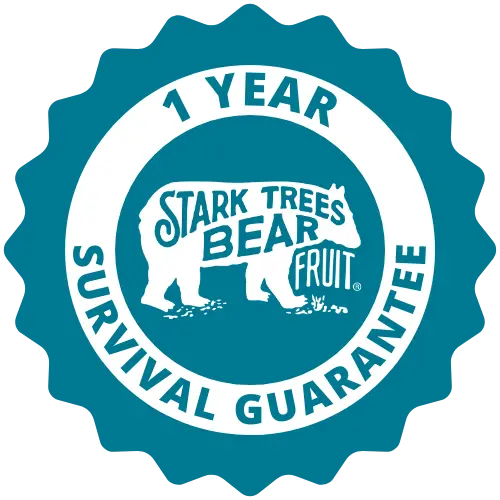

Since 1816, Stark Bro’s has promised to provide customers with the very best fruit trees and plants. It’s just that simple. If your trees or plants do not survive, please let us know within one year of delivery. We will send you a free one-time replacement, with a nominal shipping fee of $9.99. If the item in question is not available, we can issue a one-time credit to your account equaling the original product purchase price or issue you a refund. Read more about our warranty policy.
Characteristics
| Bloom Color | White |
| Bloom Time | Early - Mid |
| Chill Hours | 800 |
| Fruit Color | Yellow |
| Fruit Size | Large |
| Hardiness Zone Range | 5 - 8 |
| Pollination | Pollinator Required |
| Ripens/Harvest | Late August |
| Shade/Sun | Full Sun |
| Soil Composition | Loamy |
| Soil Moisture | Well Drained |
| Soil pH Level | 6.0 - 7.0 |
| Taste | Spicy |
| Texture | Smooth, Firm |
| Years to Bear | 4 - 6 |
Size & Spacing
Mature Size
| Standard | 18 - 20' tall x 12 - 13' wide |
| Semi-Dwarf | 12 - 15' tall x 9 - 11' wide |
| Dwarf | 8 - 10' tall x 6 - 7' wide |
Recommended Spacing
| Standard | 18 - 20' |
| Semi-Dwarf | 12 - 15' |
| Dwarf | 8 - 10' |
Zone Compatibility
Pollination
This variety requires another one for adequate pollination.
Tools & Supplies
Planting & Care
Learn all about how to grow pear trees in The Growing Guide. An entire section of our website dedicated to your growing success.
Shipping Information
Arrives when it's time to plant
Questions & Answers
Have you researched what trees grow well in your area? Maybe just find out what trees do well with your local climate and insects, etc. and plant them. It could be that you have apples that simply don't do well in your area, but a different variety of apples would thrive.
Bartlett tends to be an early-season blooming variety, so it is compatible with Chojuro; however, since bloom time overlap can vary by year and location, you may want to opt for another compatible European pear variety to be a more dependable pollination source for your Bartlett.
Bartlett pear trees are NOT firelight resistant and Starks description does not do a good job to make it plan and the lady at customer support didn`t seem well informed about it. I planted 2 Bartlett pear trees back in 2005 and they did well right to the point they started to produce which time the FB wiped them out, real shame.
Thank you for your question. The time to pick pears depends upon when they are ripe, not on your hardiness zone. You may have experienced a very hot/cold/wet/dry summer, all of which will affect when your crop ripens.
Unlike apples, most pear varieties do not ripen best while still on the tree. They can become mushy or mealy, and can rot from the inside. If you pick your pears when they're slightly immature, they will ripen better. Most mature pears will detach when you tilt them sideways, so pick them before that.
My pears are not well enough established to bear fruit yet. I wouldn't think that distance would be a problem, possibly blooming to early and affected by cooler temps or a lack of pollinators. I have had a wet late spring also affect apples this last year. Try some mason bee structures.
i
Dogwood trees like some shade, pears require full sun,
I would not do any considerable trimming until the dormant season (fall/winter). Opening wounds during the wet season can increase the chance of disease (especially for pear trees). Cutting while it's too dry in the summer could cause the tree to dry too much.
Pears do not ripen on the tree; they must ripen off the tree. This article will help a lot: //www.starkbros.com/growing-guide/article/pears-ready-to-harvest
I have 2 Bartletts from Starkbros. I have 2 Asian pears. My Asian pears bloomed during late Feb and into early Mar. The Bartletts just starting to wake up in the middle of Mar. So, in my case no it does not overlap.
Yes ,Bartlett's are excellent for canning.
Customer Reviews
I planted the Standard Supreme XL Potted 4 - 5' version in fall of 2022, along with a Collette Pear tree so they could pollinate each other.
Spring/summer of the following year, the deer pressured this Bartlett, eating most of it's leaves, and ate the Collette down to the ground. But this Bartlett survived.
Now it is 2.5 years later, late May of 2025, and my Bartlett it about 6 feet tall and has at least 4 fruits on it. Maybe more, I didn't spend a lot of time counting. With no pollinator tree within at least 6 miles, more likely 40 miles.
So I'd say it is GOOD TO GO, worth the $80 I paid for it.
I planted it in November because the firs t tree I ordered was damage by an animal that chewed it to pieces. As a matter of fact all the trees you sent me were great. All the trees tripled in size in a few months excep0t for the two cherry trees. The cherry trees arrived as four foot sticks and in one year they are; 17 and 15 feet tall and growing fantastically.


 Options
Options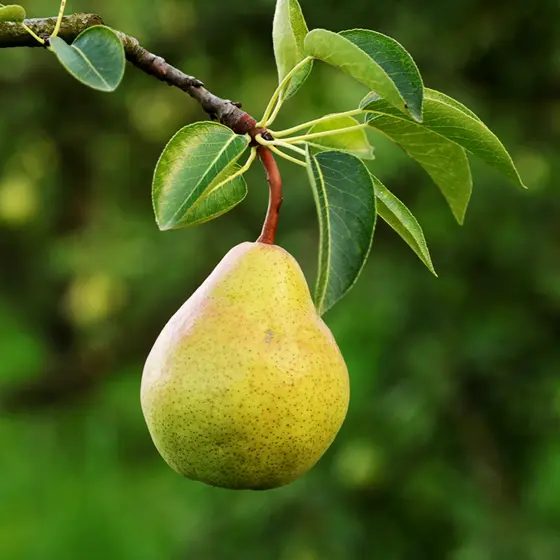
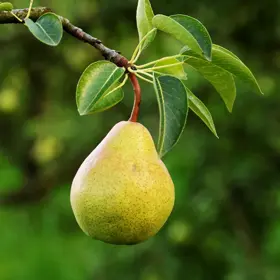
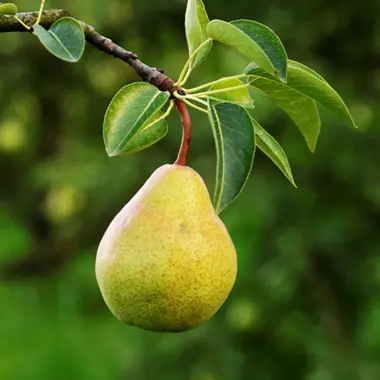
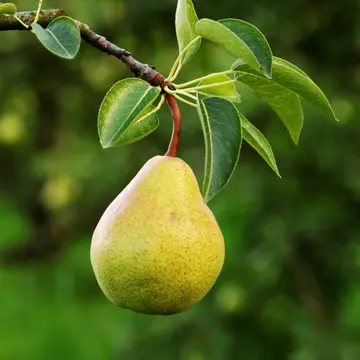
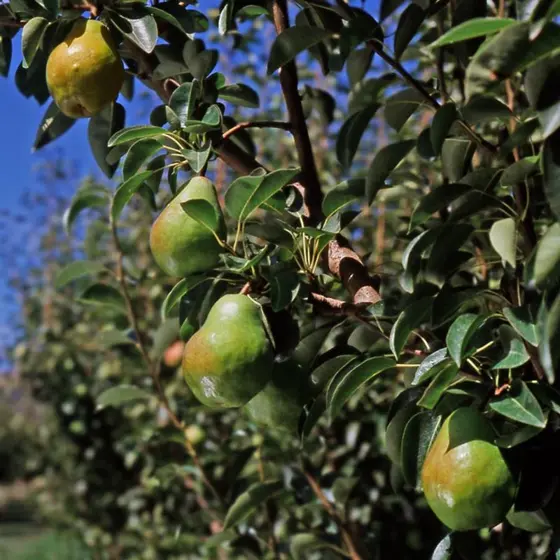
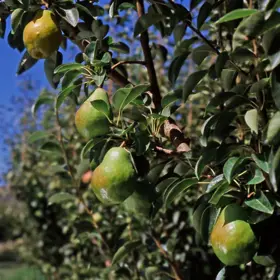
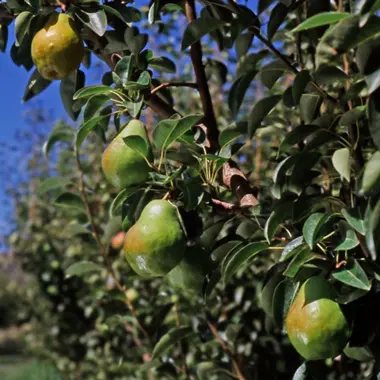
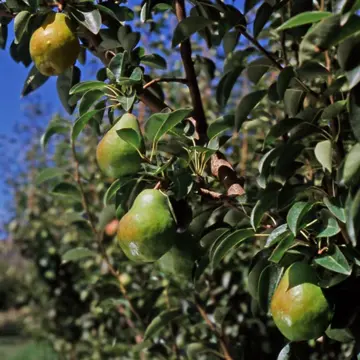
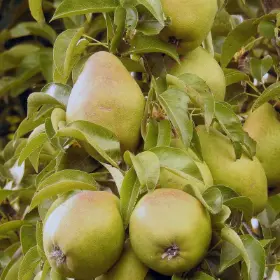
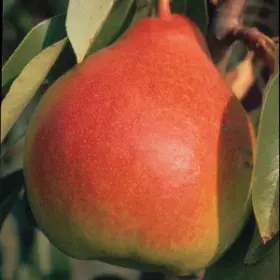
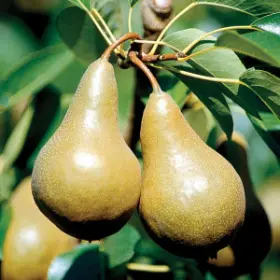
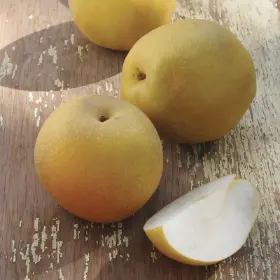
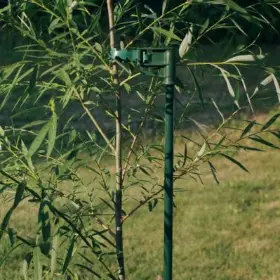
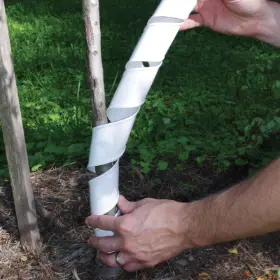
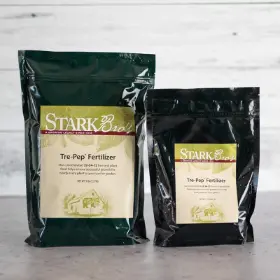
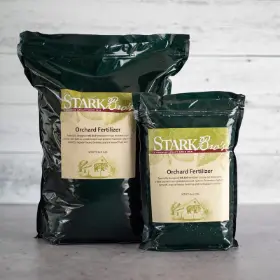




















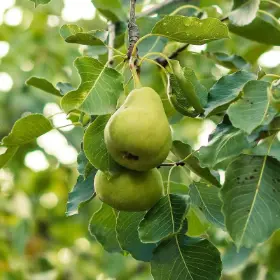
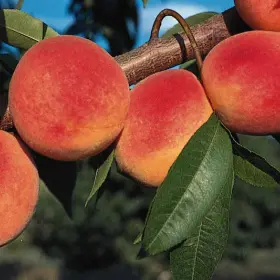
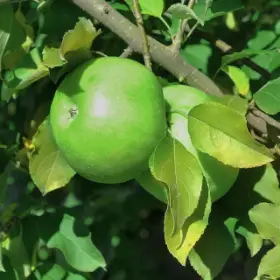
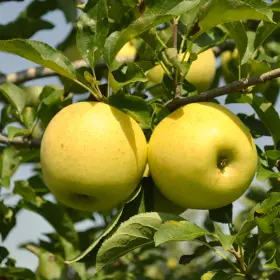
A solid variety.
Old fashioned good to eat goid for cooking and canning. Many uses....
Favorite of the kids, organic.
The Bartlett Pear Tree I bought last spring died. Since I only have a moonlight pear that survived the winter I need to have another species for pollination so I will get fruit.